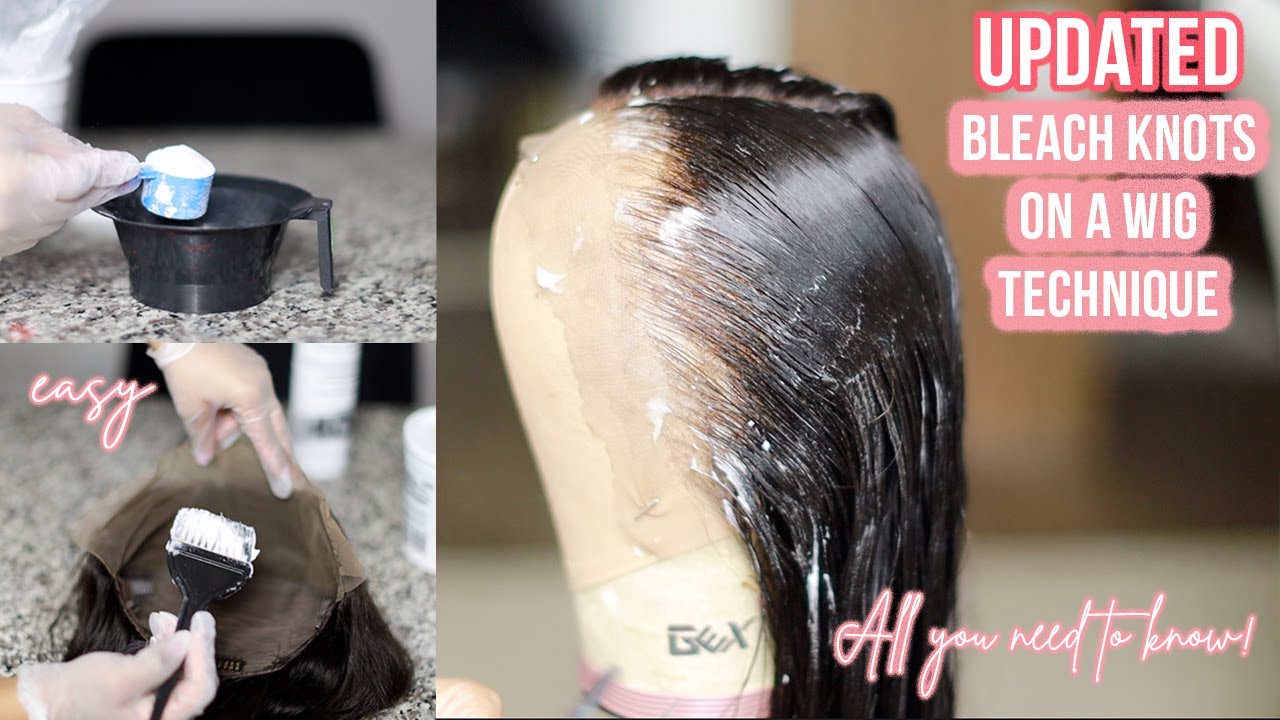Have you ever wondered how to bleach knots on a human hair wig to achieve a more natural-looking appearance? Well, you’ve come to the right place! In this article, we will discuss in detail the process of bleaching knots on a human hair wig, ensuring that you have all the information you need to achieve the desired result.
When it comes to human hair wigs, the knots at the base of the wig cap are often the giveaway that it is not your natural hair. These knots need to be bleached to create the illusion of hair growing directly from the scalp. By bleaching the knots, you can achieve a seamless and realistic look that mimics the appearance of natural hair.
The process of bleaching knots on a human hair wig involves using a mixture of bleach powder and developer to lighten the knots. This mixture is applied directly to the wig cap, targeting the areas where the knots are located. It is important to follow specific guidelines and precautions to ensure the safety of the wig and achieve the desired result.
In this article, we will walk you through the step-by-step process of bleaching knots on a human hair wig, including the materials you will need and the recommended techniques to achieve optimal results. So, if you’re ready to learn more and achieve a flawless and natural look with your human hair wig, keep reading!
To learn more about how to bleach knots on a human hair wig, continue reading the full article. We will provide you with detailed instructions, tips, and tricks to ensure that you achieve a professional-looking result without damaging your wig. So, whether you’re a seasoned wig wearer or new to the world of human hair wigs, this article has everything you need to know to achieve a natural and flawless look. Bleaching knots on a human hair wig is a process that involves lightening the knots where the hair is tied to the lace or base of the wig. This technique helps create a more natural and realistic hairline by making the knots blend seamlessly with the scalp. In this article, we will guide you through the steps of bleaching knots on a human hair wig, and provide tips on achieving the best results.
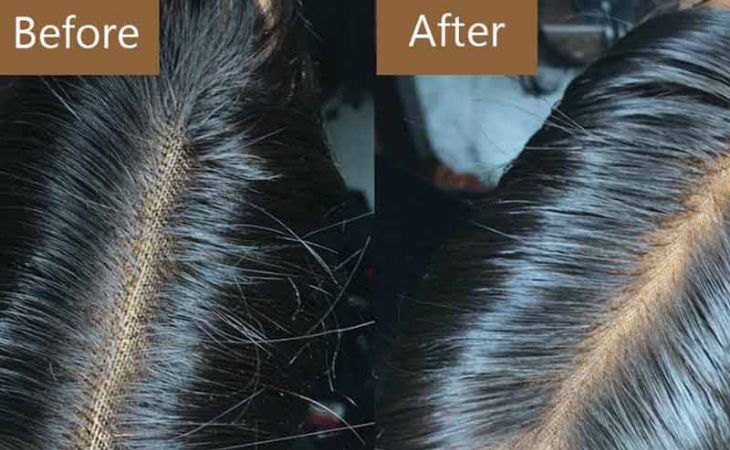
Understanding the Purpose of Bleaching Knots
Why do knots need to be bleached on a human hair wig?
When a wig is constructed, the hair is tied to the lace or base using a technique called ventilating. The knots created during this process can be visible, especially on darker or more densely knotted wigs. By bleaching the knots, you are essentially lightening the color of the knots so that they appear less noticeable against your scalp.
What are the benefits of bleaching knots?
Bleaching knots on a human hair wig offers several benefits. Firstly, it creates a more natural-looking hairline, as the bleached knots resemble the color of the scalp. This helps the wig appear more realistic, especially when the hair is pulled back or styled away from the face. Additionally, bleaching knots allows for more versatility in styling, as it eliminates the need for constantly hiding the knots with makeup or other concealers.
Preparing the Wig for Bleaching Knots
How to properly wash and dry the wig before bleaching knots?
Before bleaching the knots on your wig, it is crucial to ensure that it is clean and free from any product buildup or residue. Follow these steps to wash your wig:
- Fill a basin or sink with lukewarm water and add a small amount of wig shampoo.
- Gently swish the wig in the water, ensuring that the shampoo is evenly distributed.
- Rinse the wig thoroughly with clean water, gently squeezing out any excess water.
- Apply conditioner to the wig, focusing on the mid-lengths to ends.
- Rinse the wig again to remove the conditioner.
- Gently pat the wig with a towel to remove excess water. Avoid rubbing or twisting the hair, as this can cause tangling.
Once the wig is clean, it is important to let it air dry completely before proceeding with the bleaching process. You can place the wig on a wig stand or mannequin head to help it maintain its shape while drying.
What products are needed for the preparation process?
To properly wash your wig, you will need the following products:
- Wig shampoo: Look for a specifically formulated wig shampoo, as regular shampoos may contain harsh ingredients that can damage the hair.
- Conditioner: Opt for a wig conditioner that provides moisture and nourishment without weighing the hair down.
- Towel: Use a soft towel or microfiber cloth to blot excess water from the wig.
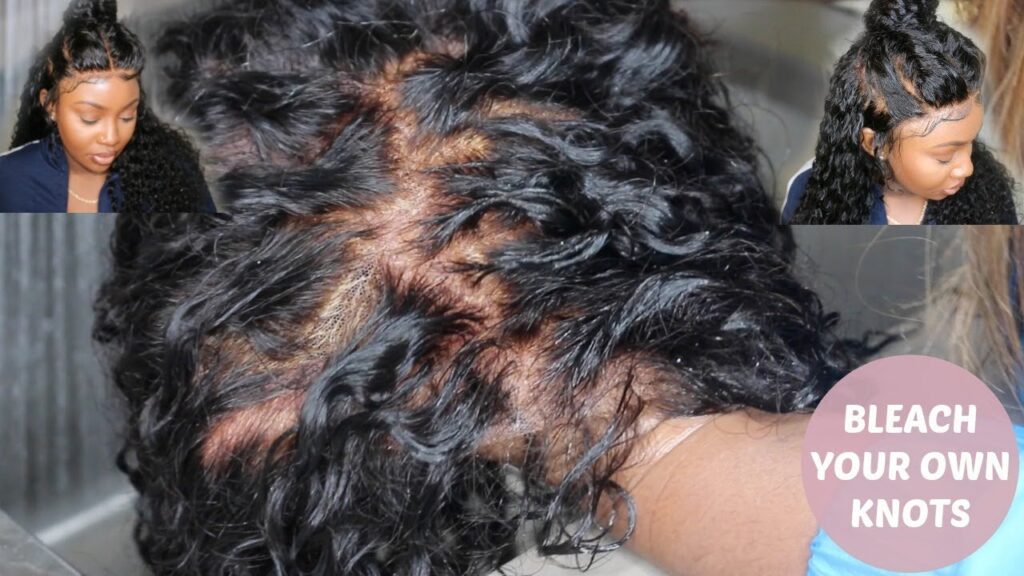
Choosing the Right Bleaching Products
What types of bleach are recommended for knot bleaching?
When it comes to bleaching knots on a human hair wig, it is crucial to choose the right bleaching products. Opt for powdered bleach specifically designed for hair application. Look for bleaches that have a mild formulation and are suitable for sensitive scalps. It is also important to choose a developer that is the appropriate strength for your needs. A 20 volume developer is commonly used for knot bleaching, but you can adjust the strength based on your desired results and the hair type.
Are there any alternatives to bleach?
If you prefer not to use bleach, there are alternative methods to help conceal the knots on your wig. One popular option is using a knot sealer, which is a product that coats the knots and reduces their visibility. Another alternative is using makeup or foundation that matches your scalp color to apply on the knots, creating the illusion of a natural hairline. These alternatives can be effective in minimizing the appearance of the knots, but they may require regular touch-ups and maintenance.
Step-by-Step Guide to Bleaching Knots
Sectioning the wig for easier application
To begin the knot bleaching process, it is important to section the wig into manageable parts. This will make the application process easier and ensure that the bleach is applied evenly throughout the wig. Here’s how to section the wig:
- Place the wig on a wig stand or mannequin head.
- Comb through the hair to remove any tangles or knots.
- Use clips or hair ties to divide the hair into smaller sections, starting from the front and working towards the back.
- Make sure each section is securely clipped or tied away from the rest of the hair to avoid accidentally bleaching other areas.
Mixing the bleach and developer
Before applying the bleach to the knots, it is important to mix the bleach and developer together. Follow these steps to mix the bleach and developer:
- Put on protective gloves and eyewear to protect your hands and eyes from the bleach.
- In a non-metallic bowl, combine the powdered bleach and developer according to the instructions provided with the products. Mix well until a smooth consistency is achieved.
- Start with a small amount of bleach and developer, as you can always mix more if needed.
Applying the bleach mixture to the knots
Once the bleach mixture is prepared, it is time to apply it to the knots on the wig. Follow these steps for proper application:
- Take a small amount of the bleach mixture on a tint brush or applicator brush.
- Starting from the front of the wig, carefully apply the bleach mixture to the knots. Take care to apply the bleach only to the knots and avoid getting it on the lace or the hair.
- Use gentle, sweeping motions to ensure the bleach is evenly distributed. Avoid using excessive force, as this can cause damage to the wig.
- Continue applying the bleach mixture to each section of the wig, working your way towards the back.
Monitoring the bleaching process
As the bleach is applied, it is important to monitor the process to avoid over-bleaching or damaging the wig. Keep an eye on the color of the knots and check periodically to determine when the desired lightness is achieved. The time required for the bleach to fully develop will depend on the strength of the bleach and the hair type. It is recommended to start with a small amount of time, such as 10-15 minutes, and gradually increase the time as needed.
Washing off the bleach
Once the desired lightness is achieved, it is crucial to wash off the bleach thoroughly to stop the bleaching process. Follow these steps to wash off the bleach:
- Gently rinse the wig with lukewarm water to remove the excess bleach.
- Apply a small amount of wig shampoo and gently massage it into the wig.
- Rinse the wig thoroughly with clean water until no bleach residue remains.
- Apply conditioner to the wig, focusing on the mid-lengths to ends.
- Rinse the wig again to remove the conditioner.
- Gently pat the wig with a towel to remove excess water. Avoid rubbing or twisting the hair, as this can cause tangling.
Deep conditioning the wig
After bleaching the knots, it is crucial to deep condition the wig to restore moisture and nourishment to the hair. Follow these steps for deep conditioning:
- Apply a generous amount of deep conditioner to the wig, focusing on the mid-lengths to ends.
- Gently comb through the wig using a wide-tooth comb to distribute the conditioner evenly.
- Place the wig in a plastic bag or wrap it in a towel to create a warm environment.
- Leave the conditioner on for the recommended time, usually 15-30 minutes.
- Rinse the wig thoroughly with clean water to remove the conditioner.
- Gently squeeze out the excess water and pat the wig dry with a towel.
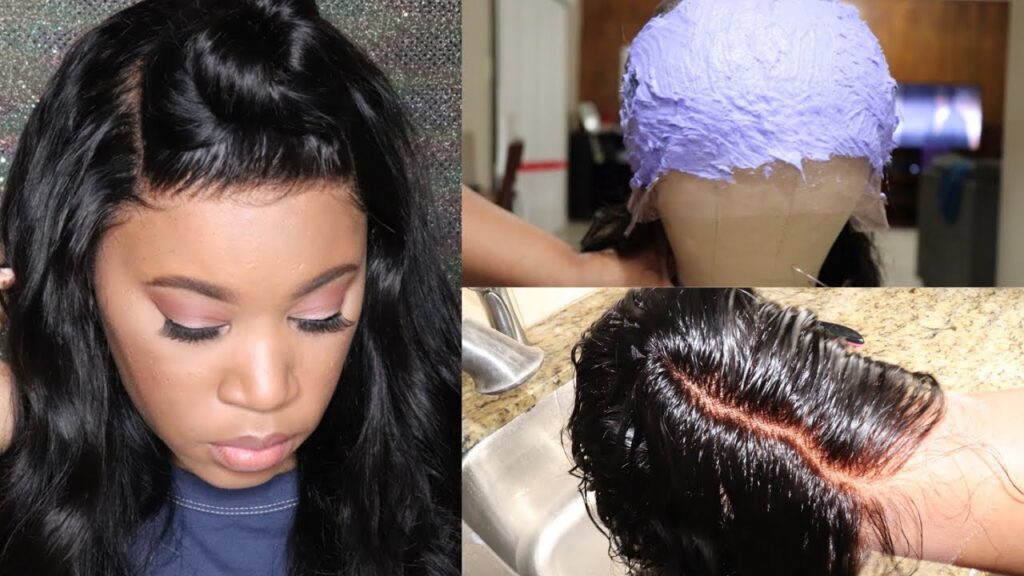
Tips for Achieving a Natural Look
How long should the bleach be left on the knots?
The length of time the bleach should be left on the knots will depend on several factors, such as the strength of the bleach and the hair type. It is recommended to start with a small amount of time, such as 10-15 minutes, and gradually increase the time as needed. Remember to monitor the bleaching process closely to avoid over-bleaching, which can result in damage to the wig.
What factors can affect the bleaching outcome?
Several factors can affect the outcome of knot bleaching on a human hair wig. The hair type, hair color, and the density of the knots can all impact how well the bleach lightens the knots. Additionally, the type of bleach and developer used, as well as the time the bleach is left on the knots, can affect the final result. It is important to consider these factors and make adjustments as needed to achieve the desired outcome.
How to prevent over-bleaching or under-bleaching?
To prevent over-bleaching or under-bleaching, it is important to monitor the bleaching process closely. Start with a small amount of bleach and developer, and test the bleaching time on a small section of the wig before proceeding with the rest. This will help you determine how long the bleach should be left on the knots to achieve the desired lightness. If the knots are not lightening enough, you can leave the bleach on for a longer period of time. However, be cautious not to leave the bleach on for too long, as this can result in over-bleaching and damage to the wig.
Caring for a Wig with Bleached Knots
How often should the wig be washed after bleaching knots?
After bleaching knots on a human hair wig, it is important to adjust your washing routine to ensure the longevity of the wig. While the frequency of washing will depend on various factors, such as the amount of product used and the environment the wig is exposed to, it is generally recommended to wash the wig every 7-10 wears. This will help remove any product buildup or residue and keep the wig looking fresh and vibrant.
What products should be used for maintenance?
To maintain a wig with bleached knots, it is important to use products specifically formulated for human hair wigs. Here are some essential products for wig maintenance:
- Wig shampoo: Use a mild wig shampoo that is designed to clean and nourish human hair wigs without causing damage or stripping the color.
- Conditioner: Opt for a wig conditioner that provides moisture and nourishment to the hair, preventing dryness and tangling.
- Leave-in conditioner: Apply a leave-in conditioner to the wig to provide added moisture and protect the hair from damage.
- Wig brush or wide-tooth comb: Use a wig brush or wide-tooth comb to detangle the hair gently, starting from the ends and working your way up to the roots.
How to prevent damage to the knots during styling?
To prevent damage to the knots on your wig, it is important to handle the wig with care during styling. Here are some tips to keep in mind:
- Avoid excessive heat: While human hair wigs can withstand heat styling, it is important to use heat tools sparingly and at a lower temperature setting to prevent damage to the knots.
- Use heat protectant: Before using heat tools on your wig, apply a heat protectant spray to protect the hair from damage and minimize the risk of knot damage.
- Be gentle when combing or brushing: When detangling the wig, use a wig brush or wide-tooth comb and start from the ends, working your way up to the roots. Avoid pulling or tugging on the hair, as this can loosen the knots or cause breakage.
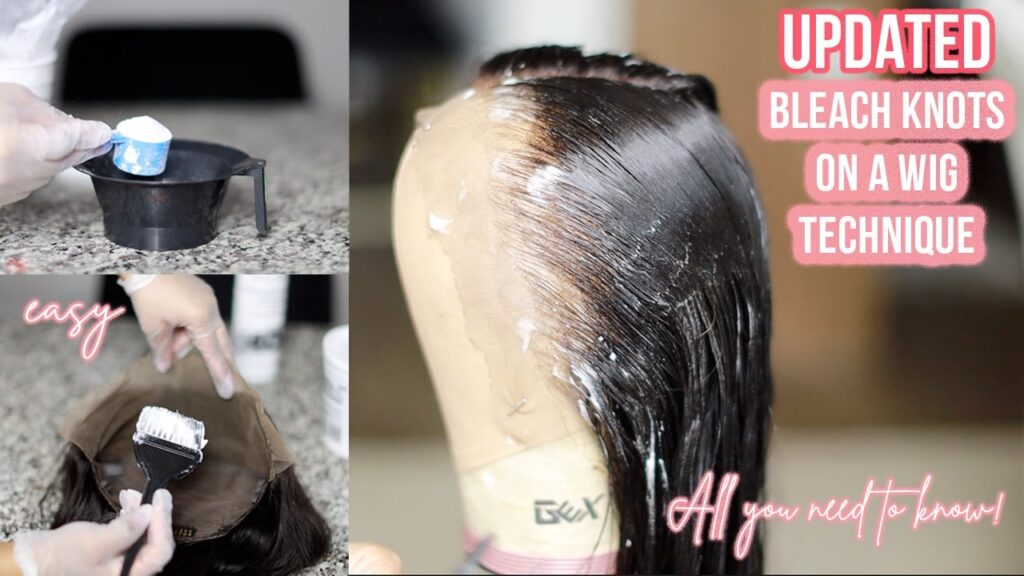
Common Mistakes to Avoid
Not performing a patch test before bleaching knots
Before bleaching the knots on your wig, it is crucial to perform a patch test to check for any adverse reactions. Apply a small amount of the bleach mixture to a hidden area of the wig, such as the inside of the cap, and leave it on for the recommended time. After rinsing off the bleach, observe the area for any signs of irritation or damage. If no adverse reactions occur, it is safe to proceed with bleaching the knots.
Using incorrect bleach or developer ratios
Using incorrect bleach or developer ratios can affect the outcome of knot bleaching. It is crucial to follow the instructions provided with the products and mix the bleach and developer in the recommended ratios. Using too much bleach can result in over-bleaching and damage to the wig, while using too little can lead to under-bleaching and visible knots.
Over-processing the knots with bleach
Leaving the bleach on the knots for too long can over-process the hair and lead to damage. It is important to monitor the bleaching process closely and remove the bleach as soon as the desired lightness is achieved. Leaving the bleach on for too long can cause the hair to become dry, brittle, and prone to breakage.
Neglecting proper aftercare
After bleaching knots on your human hair wig, it is crucial to provide proper aftercare to keep the hair looking healthy and vibrant. This includes regular washing and conditioning, as well as avoiding excessive heat styling or the use of harsh chemical products. Neglecting proper aftercare can result in dryness, tangling, and damage to the hair.
Safety Precautions to Consider
Wearing protective gloves and eyewear
When bleaching knots on a human hair wig, it is important to prioritize safety and protect your hands and eyes. Always wear protective gloves and eyewear to prevent direct contact with the bleach, which can cause skin irritation or damage to the eyes.
Working in a well-ventilated area
Bleaching knots on a human hair wig can release fumes that may be harmful when inhaled. To ensure your safety, it is crucial to perform the bleaching process in a well-ventilated area. Open windows or doors to allow fresh air to circulate, or use a fan to improve air circulation.
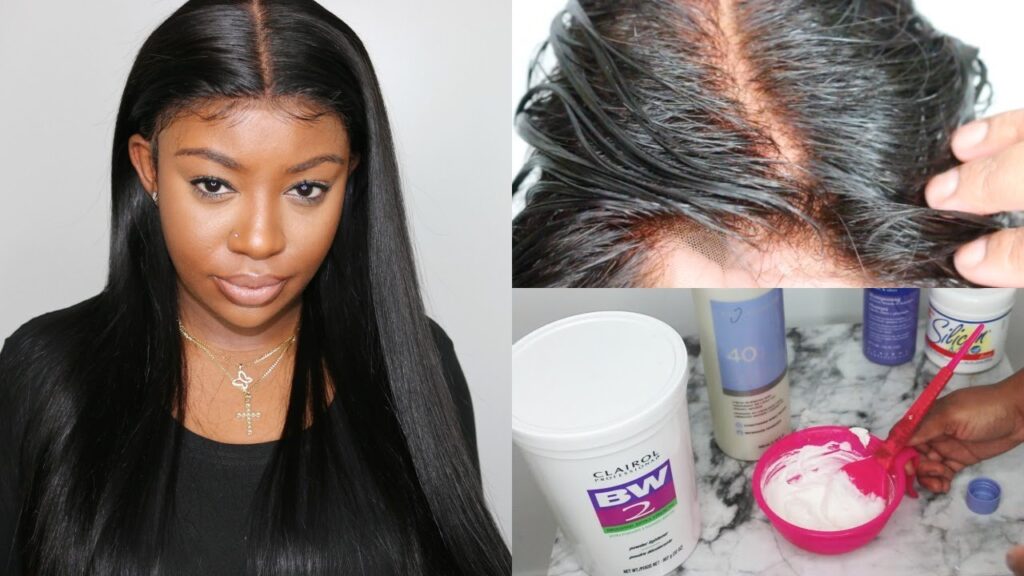
Seeking Professional Help
When should a professional be consulted for knot bleaching?
If you are unsure or uncomfortable with bleaching knots on your human hair wig, it is recommended to seek professional help. Professional wig specialists or hairstylists have experience in knot bleaching and can ensure that the process is carried out safely and effectively. They can also provide personalized advice and recommendations based on your specific needs and preferences.
How to find a reputable wig specialist or hairstylist?
To find a reputable wig specialist or hairstylist, consider the following tips:
- Ask for recommendations from friends, family, or online communities.
- Research salons or wig boutiques in your area that specialize in wig care and styling.
- Read online reviews and testimonials to gauge the quality of service provided by different professionals.
- Schedule consultations or speak with professionals to discuss your needs and ensure their expertise aligns with your requirements.
Alternative Methods for Concealing Knots
Using concealer or foundation to match the scalp color
If you prefer not to bleach the knots on your wig, an alternative method is to use a concealer or foundation that matches your scalp color. Apply a small amount of concealer or foundation to the knots using a small brush or sponge, blending it well to create a seamless and natural look. This method can help camouflage the knots and create the illusion of a realistic hairline.
Applying powder or tinted hair spray to camouflage the knots
Another alternative to bleaching knots is to use powder or tinted hair spray to camouflage the knots. Lightly dust a small amount of powder or apply tinted hair spray to the knots, using a small brush or a makeup sponge. Gently blend the product into the knots to create a natural appearance. This method can be effective in minimizing the visibility of the knots, especially on lighter-colored wigs.
Maintaining the Longevity of Bleached Knots
What factors can cause the knots to become visible again?
Over time, the knots on a bleached human hair wig may become visible again due to several factors. These include product buildup, excessive heat styling, harsh chemical treatments, and inadequate maintenance. It is important to properly care for and maintain the wig to ensure the longevity of the bleached knots and keep them looking natural.
How to touch up the roots or regrowth?
Touching up the roots or regrowth on a human hair wig with bleached knots requires precision and care. Here’s how to do it:
- Section the wig, focusing on the areas where the roots or regrowth are visible.
- Mix a small amount of bleach and developer, following the recommended ratios.
- Apply the bleach mixture only to the areas where the roots or regrowth are visible, using a tint brush or applicator brush.
- Monitor the bleaching process closely, checking the color periodically to determine when the desired lightness is achieved.
- Wash off the bleach thoroughly, ensuring no residue remains.
- Condition the wig to restore moisture and nourishment to the hair.
When is it time to consider re-bleaching the knots?
The frequency of re-bleaching the knots on a human hair wig will depend on several factors, such as how quickly the hair grows and how visible the knots become. As a general guideline, it is recommended to re-bleach the knots every 4-6 weeks or as needed. Pay close attention to the visibility of the knots and consider re-bleaching them when they start to become more noticeable against the scalp.
Understanding the Risks and Limitations
Can bleaching knots damage the wig?
When done correctly and with the right products, bleaching knots on a human hair wig should not cause any significant damage. However, it is important to follow the instructions carefully and avoid over-processing the hair. Leaving the bleach on for too long or using a bleach that is too strong can result in damage to the wig, such as dryness, breakage, or even the weakening of the lace or base.
Are there any limitations to knot bleaching?
While knot bleaching can significantly improve the appearance of a human hair wig, there are some limitations to keep in mind. Knot bleaching is most effective on wigs with a lace or silk base, as these provide a more natural-looking scalp. Additionally, knot bleaching may not completely eliminate the visibility of the knots, especially on darker-colored or densely knotted wigs. It is important to have realistic expectations and understand that complete invisibility of the knots may not be achievable.
How to minimize the risks associated with bleaching?
To minimize the risks associated with bleaching knots on a human hair wig, it is important to take the following precautions:
- Perform a patch test before bleaching the knots to check for any adverse reactions.
- Follow the instructions provided with the bleach and developer, and mix them in the recommended ratios.
- Monitor the bleaching process closely to avoid over-bleaching or damage to the wig.
- Be gentle when washing, styling, and handling the wig to minimize breakage and damage to the knots.
Exploring Alternative Wig Construction Methods
Are there wigs available with pre-bleached knots?
Yes, there are wigs available with pre-bleached knots. Pre-bleached knot wigs are designed to save you the time and effort of bleaching the knots yourself. These wigs come with the knots already lightened, creating a more natural-looking hairline from the moment you wear them. Pre-bleached knot wigs are popular for their convenience and the instant realistic appearance they provide.
What other wig construction methods provide natural-looking hairlines?
Aside from bleaching knots, there are other wig construction methods that provide natural-looking hairlines. Here are a few examples:
- Silk top wigs: Silk top wigs feature a layer of silk at the top of the wig, which creates the appearance of a natural scalp. The silk top conceals the knots and mimics the look of natural hair growth.
- Frontal wigs: Frontal wigs feature a lace frontal that extends from ear to ear, providing a seamless hairline. This construction method allows for versatile parting and styling options, giving the wig a natural and realistic appearance.
- 360 lace wigs: 360 lace wigs feature a lace cap that extends all around the perimeter of the wig, allowing for a natural-looking hairline at the front, back, and sides. This construction method offers maximum versatility, as it can be styled in a variety of ways.
- Glueless wigs: Glueless wigs are designed for easy application and removal, featuring adjustable straps and combs or clips to secure the wig in place. These wigs offer a natural-looking hairline without the need for adhesive or glue.
Conclusion
Human hair wigs are a remarkable innovation in the world of hair fashion, providing endless possibilities for styling and offering solutions for individuals dealing with hair loss or simply looking to change up their look. Bleaching knots on a human hair wig is a technique that can significantly enhance the wig’s appearance by creating a natural-looking hairline. By understanding the purpose of knot bleaching, properly preparing the wig, choosing the right bleaching products, and following a step-by-step guide, you can successfully bleach the knots on your human hair wig.
Remember to prioritize safety throughout the process by wearing protective gloves and eyewear, and working in a well-ventilated area. Additionally, seeking professional help when needed and exploring alternative methods for concealing knots can further enhance your experience with a human hair wig.
With proper care and maintenance, a human hair wig with bleached knots can offer a natural and realistic appearance, allowing you to embrace your unique style with confidence. Whether you’re looking to change up your hairstyle or seeking a solution for hair loss, knot bleaching on a human hair wig can be a transformative experience, helping you achieve the look you desire.
